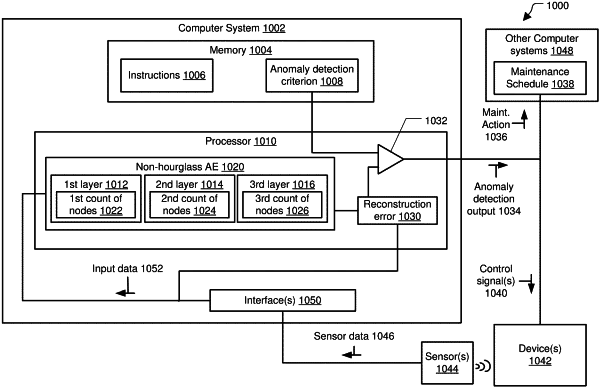| CPC G06N 3/086 (2013.01) [G06N 3/045 (2023.01); G06N 3/082 (2013.01); G06N 3/088 (2013.01); G06N 3/084 (2013.01)] | 26 Claims |

|
1. A computer system comprising:
an interface to receive sensor data indicative of operation of one or more devices from a sensor distinct from the interface, wherein the sensor data includes status data indicative of uptime for the one or more devices; and
a processor configured to:
provide input data based on the sensor data to a dimensional-reduction model, wherein the dimensional-reduction model has a decoder portion and an encoder portion, wherein the decoder portion and the encoder portion are not mirrored;
obtain output data from the dimensional-reduction model responsive to the input data;
determine a particular reconstruction error indicating a difference between the input data and the output data;
perform a comparison of the particular reconstruction error to an anomaly detection criterion, wherein the dimensional-reduction model is configured to generate a reconstruction error that satisfies the anomaly detection criterion responsive to the input data corresponding to historical data associated with a time period prior to a historical device failure or a historical fault condition, the time period distinct from a particular time corresponding to the historical device failure or historical fault condition; and
generate an anomaly detection output for the one or more devices based on a result of the comparison during operation of the one or more devices, wherein the anomaly detection output selectively predicts a future anomaly based on the result of the comparison, wherein the anomaly detection output is generated responsive to a determination that an average value based on the particular reconstruction error is greater than a threshold specified by the anomaly detection criterion, and wherein the anomaly detection output identifies a corrective action to prevent the future anomaly responsive to predicting the future anomaly.
|